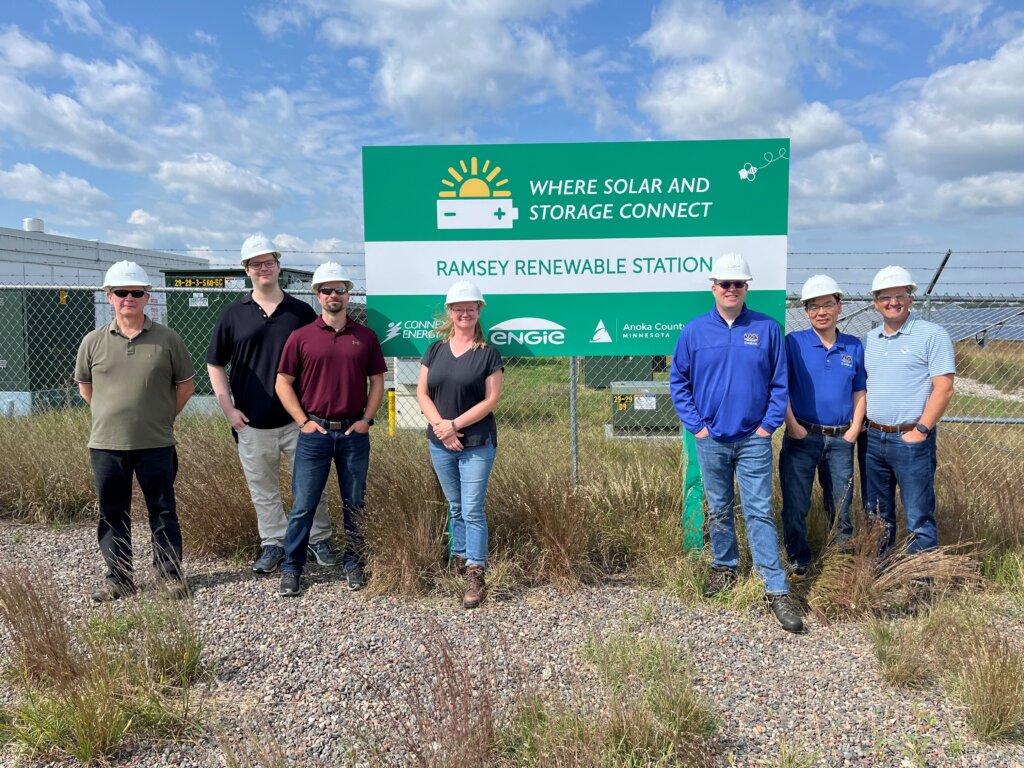
Uncertain Energy Availability was categorized as an EXTREME RISK in MRO’s 2024 Regional Risk Assessment. The extreme category is reserved for risk items that could have both a high probability of occurrence and a high impact on reliability of the bulk power system in MRO’s regional footprint, which spans 16 states and 2 Canadian provinces. This is the first extreme risk in the seven years MRO has been conducting this assessment.
Greater reliance on renewable sources of energy—specifically those that are weather dependent and available intermittently—has led to growing uncertainty of the bulk power system’s ability to meet forecasted electricity demand. This uncertainty is exacerbated by severe weather events that strain the grid and limit energy production, often at a time when it is needed the most.
There are new technologies under development or being deployed across North America that support renewable energy by bridging the gap between the intermittent nature of renewable grid assets and the delivery of electricity when and where it is needed. One such solution is battery energy storage systems, or BESS. Utilities across the region and residential and commercial utility customers are increasingly installing these systems.
Staff from MRO’s Reliability Analysis Department recently visited Connexus® Energy’s solar and battery storage site in Ramsey, Minnesota. Connexus is Minnesota’s largest electric distribution cooperative, serving more than 145,000 member accounts. Connexus facilities include 20 megawatts of solar electricity from 5 solar array sites and 15 megawatts of battery storage located at 2 of the solar array sites. The battery storage provides 2 hours of discharge capability totaling 30 MWh.[1] Connexus has long-term offtake agreements in place for each of the solar and storage sites.
The site includes automated control systems and advanced monitoring to ensure optimal operational efficiency. The batteries are primarily charged using onsite solar resources and discharged during peak energy usage, supplementing other energy sources to ensure a steady and reliable power system. The batteries can also be used to reduce demand during grid emergencies to avoid curtailing customer load.
Batteries like the ones installed by Connexus can mitigate the risk of Uncertain Energy Availability by storing renewable energy and releasing it back onto the system when it is needed. Currently, there is a limit to the duration these types of batteries can provide power – requiring additional sources of energy for longer duration shortages.
Connexus’s Ramsey Renewable Station was built in 2018 and was one of the first large-scale, solar-plus-storage projects developed in Minnesota. Covering 16 acres, the station includes 3.4 megawatts of solar energy and 6 megawatts / 12 megawatt-hours lithium-ion phosphate battery storage.
A comprehensive tour of the site also allowed MRO staff to observe and learn about photovoltaic solar and battery inverter-based resources (IBRs). IBR technology provides several benefits and plays an important role in supporting the clean energy transition. However, if IBR technology is not deployed properly, it could pose risks to grid reliability. For this reason, modeling and performance challenges associated with IBRs was identified as a HIGH RISK in MRO’s 2024 Regional Risk Assessment.
IBRs behave much differently than conventional generation (coal, nuclear and gas) and respond to grid conditions based on configured controls instead of the physical response experienced by rotating, conventional machines. The unique behavior of inverter-based resources and limited industry experience has created modeling and performance challenges. We discussed with Connexus staff the importance of working closely with solar and battery providers to ensure that these resources are properly implemented and do not adversely affect the performance of Connexus’s distribution system. Connexus staff indicated the company is mitigating this risk by coordinating with developers to design and model solutions that ensure solar energy is correctly and effectively integrated into the grid.
During the Connexus site visit, MRO staff were able to collaboratively discuss operational and design innovations, strengths, and challenges of the site. This kind of information sharing is critical to advancing MRO’s vision of a highly reliable and secure North American bulk power system. A vision shared by Connexus Energy.
The information gathered during the site visit supports MRO’s Generator Winterization Program, as well as ERO Enterprise event and performance analysis efforts. We wholeheartedly thank Connexus Energy for inviting MRO staff to tour the Ramsey Renewable Station to learn about the challenges and benefits the station provides to Connexus’s members.
This important work advances the shared mission of the ERO Enterprise and industry to identify, prioritize, and assure effective and efficient mitigation of risks to the reliability and security of the North American bulk power system.
To learn more about regional challenges to bulk power system reliability, read MRO’s 2024 Regional Risk Assessment found on our website.
– Eric Graftaas, Principal Power Systems Engineer, Midwest Reliability Organization and Mark Tiemeier, Principal Technical Advisor, Midwest Reliability Organization
[1] MWh is a unit of measurement that represents the amount of electricity used or generated over a period of one hour.